13 Varieties Of Black Pumpkins
Black pumpkins hold an allure unlike any other variety, captivating us with their mystical dark rinds and often, a surprise colorful interior. While they take center stage in Halloween displays, these are very real winter squash offering unique textures and sweet, nutty flavors waiting to be discovered.
From dainty mini pumpkins to mammoth varieties topping 30 pounds, I have explored the diversity of black pumpkins for both decoration and the dinner table.
The Magic of Black Pumpkins
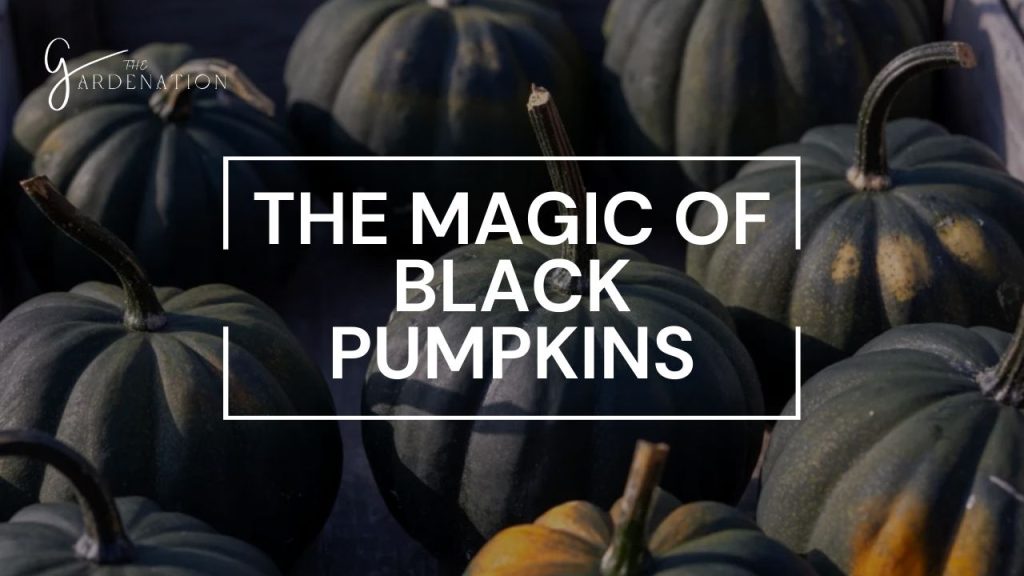
So what gives black pumpkins their distinctive noir look? The dark color arises from a few factors – genetics, growing conditions, and in some cases, disease. Pumpkins achieve their palette of colors from chlorophyll production and pigmented compounds called carotenoids.
In black varieties, genes limit chlorophyll formation in the rind, allowing dark orange and red carotenoids to show through. Cool weather and poor soil fertility intensify this effect, deepening color. And occasionally, disease causes rind darkening when pumpkins are stored for long periods post-harvest.
While their mystic shades certainly cast a spell in Halloween displays, black pumpkins offer more than meets the eye. These versatile squash serve double duty, transitioning from jack-o-lantern to centerpiece of holiday meals and sweet autumn desserts.
Understanding Pumpkin Varieties
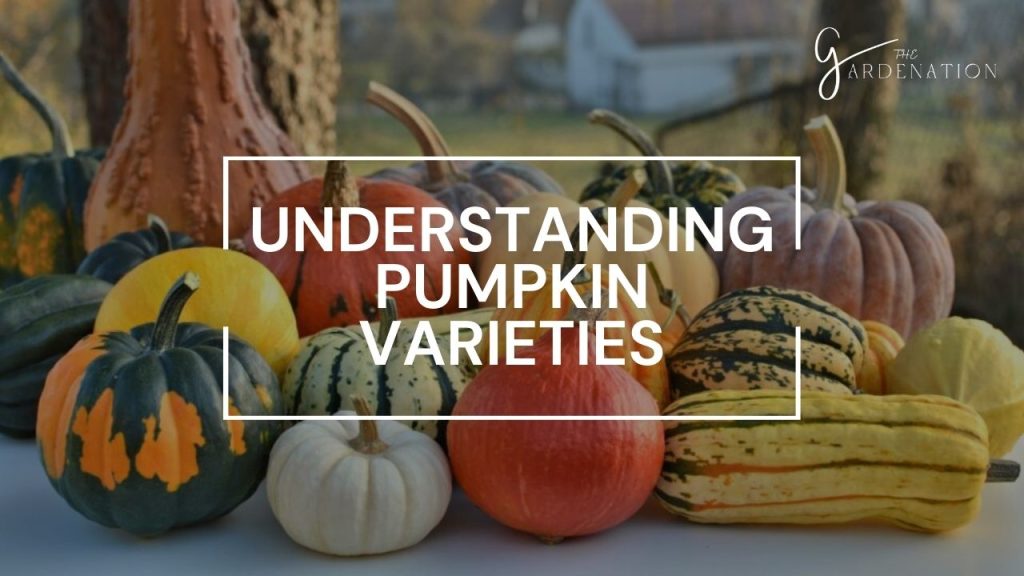
Before diving into specific black pumpkin types, I will tell you a few key differences. Pumpkins fall into two main groups – determinate and indeterminate vines. Determinate pumpkins grow as compact bushes, reaching a defined size and setting fruit all at once. These make efficient use of smaller spaces. Indeterminate vines continue growing indefinitely, spreading vines that produce fruit progressively over the season. They require ample room to roam but yield heavier total harvests.
Mini pumpkins also deserve special mention for their petite proportions. Ranging from a pound up to five pounds, these cute squash squeeze onto porch steps and tabletops. And their small size makes them perfect for stuffing mushrooms or tucking into soups. Despite their diminutive look, mini pumpkins hold big flavor.
Maturation times help in planning, too. Black pumpkins typically need 50 to 120 days from seed germination to reach harvest. Short-season varieties can be tucked into small gaps between other crops while late-maturing giants may require starting indoors.
Varieties of Black Pumpkins
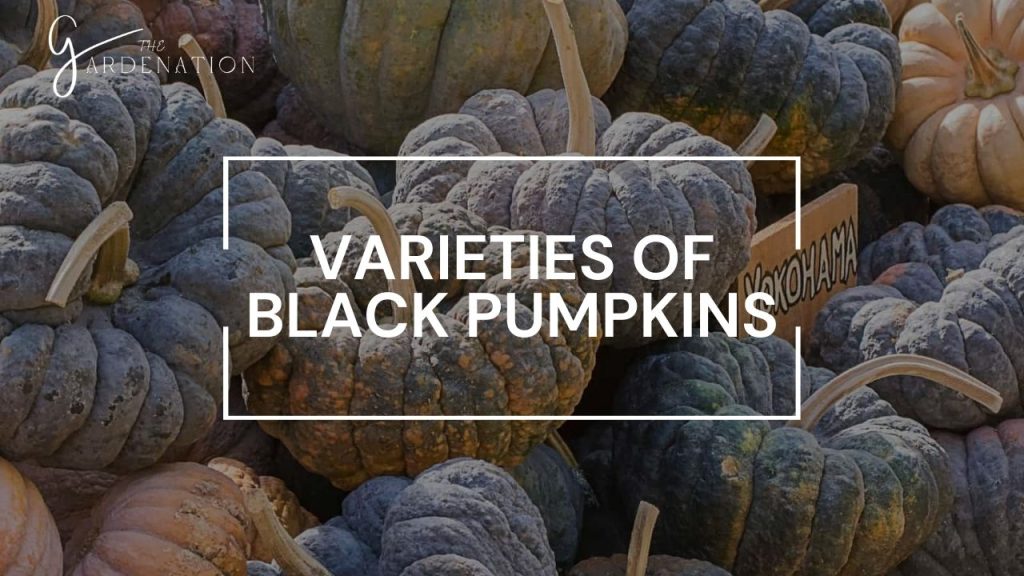
From Australian heirlooms to modern hybrids, black-skinned pumpkins offer unique shapes, textures, sizes and flavors. Here’s my view on 13 bewitching varieties:
1. Black Futsu
An heirloom from Japan, black futsu wins fans with its distinctly nutty, sweet flavor profile. The dark green skin ripens to jet black, encasing dense, golden flesh. Black futsu is smaller, averaging 3-5 pounds with a flattened round shape. As a long-season pumpkin, it matures in 110 days but stores well through winter.
2. Queensland Blue
Hailing from Australia, Queensland blue pumpkins intrigue with their knobby blue-green skin and brilliant orange interior. The bold exterior color contrasts vibrantly when cut open. With a flattened round shape, Queensland blue pumpkins grow 6-8 pounds, taking 100 days to reach full size. Their creamy texture and nutty sweetness shine through in baking.
3. Black Kat Pumpkin
A classic miniature pumpkin, the black kat variety serves up spooky chic charm. Their dark green skin develops a blue-black hue at maturity, with some paler mottling. Inside, the fine-grained flesh gleams a bright orange. Black kat pumpkins grow just 1-2 pounds on short vines, ripening in only 85 days.
4. Kabocha Pumpkin
With its fluted shape and jade green skin, kabocha makes for a striking display piece. Also called Japanese pumpkin, the thick, golden flesh hides behind the dark rind. Kabochas tip the scales around 3-5 pounds, though some giant varieties reach over 30 pounds. These squat pumpkins deliver sweet, nutty flavor to balance savory dishes and desserts alike.
5. Dark Knight Pumpkin

This appropriately named Atlantic Giant hybrid bears monster jet black pumpkins weighing up to 75 pounds each. Dark knight’s thick rind encloses thick, bright orange flesh with a mildly sweet taste profile. It reaches maturity in just 85 days despite the mammoth size. Dark knight’s sheer bulk makes it ideal for dramatic impact in fall decor.
6. Tetsukabuto Squash
Also called kabocha in some regions, this Japanese variety sports a unique hammerhead shape. Ripening to a dark green skin with faint stripes, tetsukabuto contains dense, sweet golden flesh. Typically small at 2-3 pounds, it makes an excellent single-serving meal. Ready for harvest in just 92 days, tetsukabuto stores well through winter.
7. Yokohama Squash
Originally from Yokohama, Japan, this heirloom pumpkin wins high marks for flavor. Its blue-green skin and red-orange flesh offer stunning visual contrast when cut. Yokohama matures early as a semi-bush variety, yielding diminutive fruits of just 1-2 pounds. Their sweet, nutty flavor and smooth texture make this small squash mighty.
8. Buttercup Squash
With its distinct turban shape and dark green skin, buttercup makes a unique statement among winter squash. The flesh gleams a deep orange with a sweet, nutty taste reminiscent of sweet potato. Buttercups average 3-5 pounds at maturity, which comes in just 75 days. The thick skin and flesh keep well in storage after harvest.
9. Cha Cha Squash
This eye-catching Korean variety looks like a small watermelon with its rounded shape and stripes. Cha cha’s green skin blushes with shades of orange when ripe, enclosing creamy nutty-sweet flesh. An early producer, cha cha reaches maturity in 60 days at around 2 pounds. It makes pretty servings stuffed with rice or vegetable fillings.
10. Thai Kang Kob Pumpkin
Also called kabocha in some areas, Thai kang kob bears a strong resemblance to its Japanese cousins. Its fluted shape comes draped in deep green skin hiding golden flesh within. Thai kang kobs take 85 warm days to reach 2-4 pounds. Cooks prize them for holding shape well in soups and curries.
11. Miniwarts Pumpkin
Despite the unsavory name, the miniwarts pumpkin wins fans for its stellar performance. The dark green skin erupts in wart-like bumps, fading lighter green at maturity in 80 days. Inside, its golden flesh carries a sweet, nutty flavor. Miniwarts yields diminutive fruits of 1-2 pounds on compact vines.
12. Total Eclipse Squash
This apt variety resembles a giant kabocha with dark green skin eclipsing its orange interior. Total eclipse pumpkins often show faint striping along the ribs. With a flattened round shape, fruits average 15 pounds at maturity in 92 days. The thick flesh carries a sweet, nutty taste that intensifies in storage.
13. Colorado Sunrise Pumpkin
This hybrid variety offers brilliant contrast with its orange skin striped in green. As Colorado sunrise pumpkins mature, the skin darkens toward a deep orange with green tiger stripes. The sweet flesh gleams golden orange within. Fruits reach 6-18 pounds in 100 days on vigorous vines. This eye-catching pumpkin brings tropical flair to fall displays.
For more information about Houseplants you can visit: 8 Causes Of Chinese Money Plant Leaves Curling
Black Pumpkins Care Tips
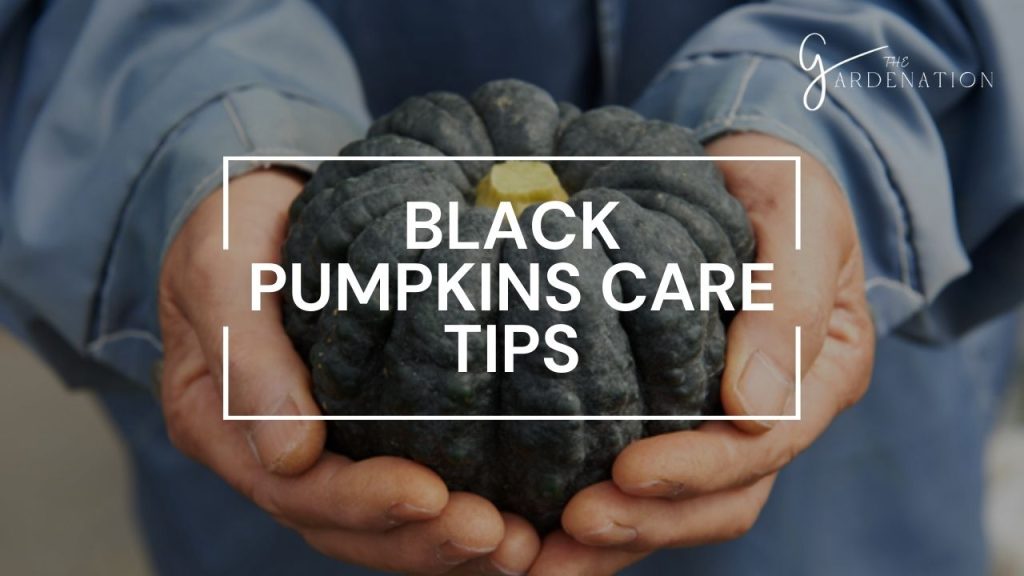
Achieving a thriving black pumpkin patch starts with understanding a few core needs. As fruiting crops, pumpkins require full sunlight exposure to develop properly. I situate plants where they’ll receive at least 8 hours of direct sun daily. Soil fertility also plays a key role. Pumpkins thrive in nutrient-rich soil with a pH between 6.0-6.8.
I pay attention to moisture levels, too, especially around flowering and fruit set. Pumpkins require about an inch of water weekly either from rainfall or irrigation. As fruits enlarge, more water keeps them swelling to full size. I try mulching around plants to conserve soil moisture while suppressing weeds.
It’s easy to nurture healthy vines with a balanced fertilizer. I use a lower nitrogen, higher phosphorus and potassium formula while plants establish. I switch to higher nitrogen fertilizer once flowering begins through the fruit development stage. This fuels vigorous vine and root growth to support maturing pumpkins.
Frequently Asked Questions
Do black pumpkins occur naturally?
Yes, black is a natural color among winter squash varieties. Darker rinds arise from genetics, growing conditions, and occasionally from disease. Certain heirlooms like the Japanese black futsu breed true for the trait through saved seeds.
Can you eat black pumpkins?
Absolutely! Black pumpkins offer the same edible flesh as other winter squash. Most contain sweet, nutty-flavored flesh perfect for soups, baked goods, and side dishes. Some varieties like Queensland blue and yokohama offer stunning visual contrast when their dark rinds are cut open.
What makes black pumpkins black?
Genetics primarily determine rind color, but cool temperatures and poor soil fertility can also deepen black pigments. Darker skin color arises from a lack of chlorophyll, allowing carotenoid pigments like lutein and zeaxanthin to show through. These antioxidant compounds also deliver some health benefits.
Do black pumpkins require special care?
Black pumpkins can be grown much like any other winter squash. Pay attention to sunlight, fertility, adequate water and spacing needs. One difference lies in curing pumpkins post harvest for longer storage life. Leaving stems attached, wipe skins with diluted bleach to kill surface mold spores before curing pumpkins for 2-3 weeks in warm, dry conditions.
Why are some black pumpkins striped or mottled?
Seeing green stripes or pale splotches on a black pumpkin is generally nothing to worry about. This color variation stems from temperature fluctuations and genetics during the growing season. Mixed coloration has no effect on edibility or quality. Embrace the unique look as part of the beauty in heirloom winter squash.
Conclusion
This overview just scratches the surface of black pumpkins’ diversity and intrigue. From tiny mini pumpkin varieties to mammoth fruit topping 75 pounds, gardeners can discover a full spectrum of shapes, sizes, flavors and perfect uses.
Beyond Halloween jack-o-lanterns, these versatile winter squash transition beautifully to the holiday table as nutritious, flavorful ingredients. Their mystic hues and unique textures cast a lingering spell of enjoyment through the season. What’s not to love about black pumpkins?
Growing pumpkins is fun! You can plant them from seeds indoors or outdoors. With some sunlight, soil, and water, the seeds will sprout into baby pumpkin plants. The plants grow vines, flowers, and finally pumpkins over the summer. Taking care of the plants is easy too.
From tiny seeds to big pumpkins and lit-up lanterns, it’s simple and fun to grow pumpkins yourself. They make the perfect fall activity and decoration!

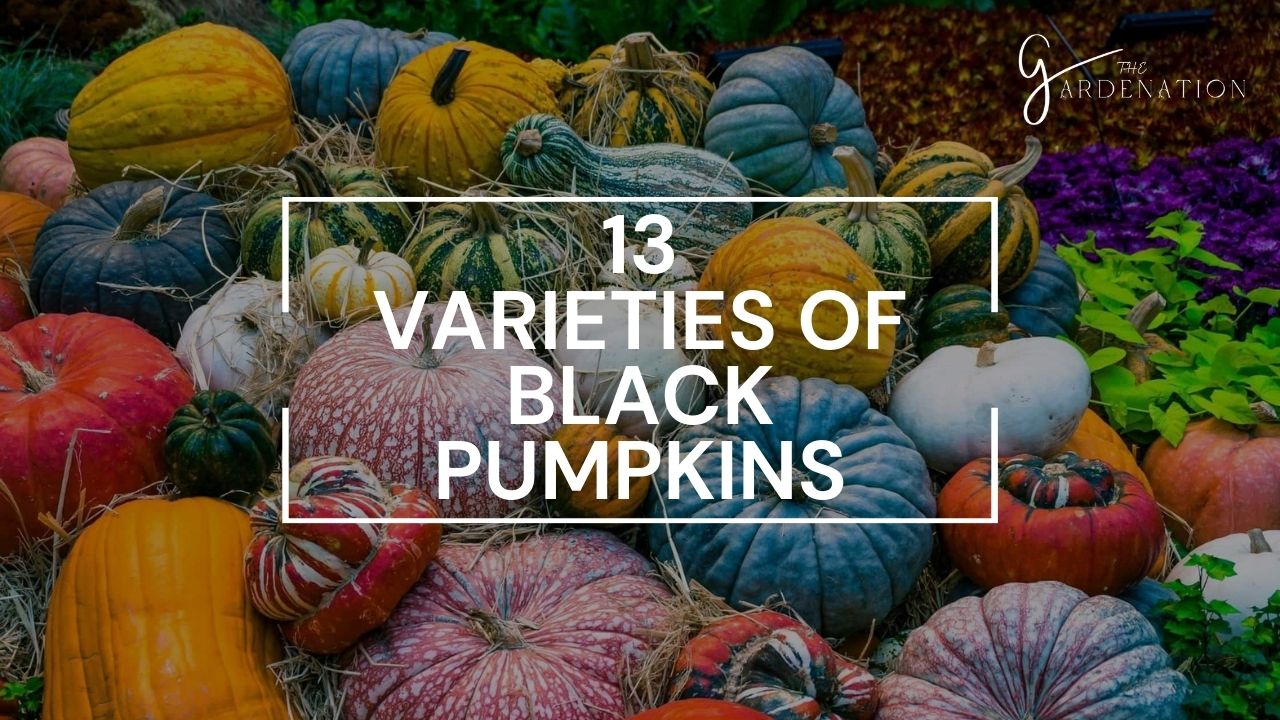
2 Comments